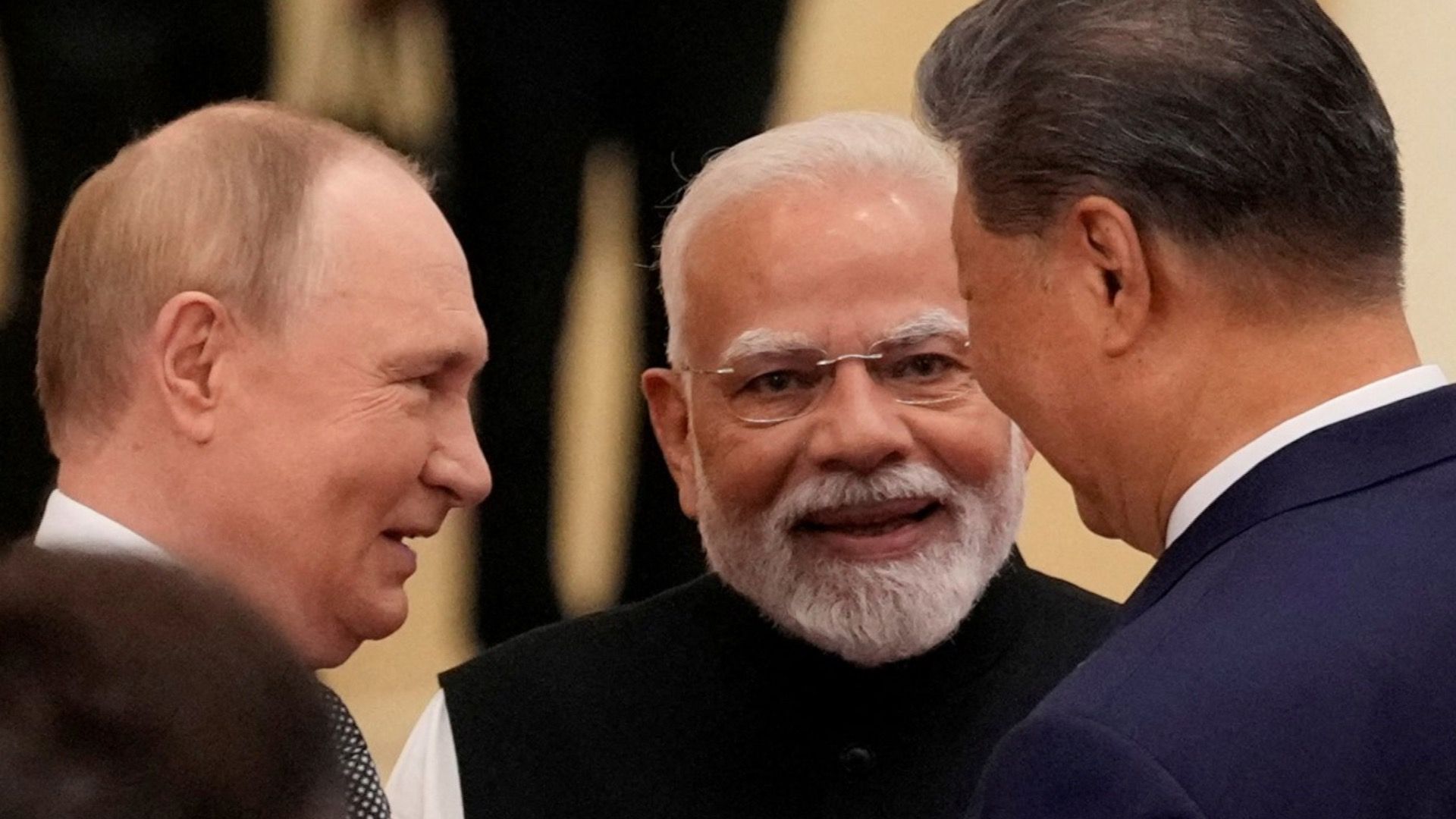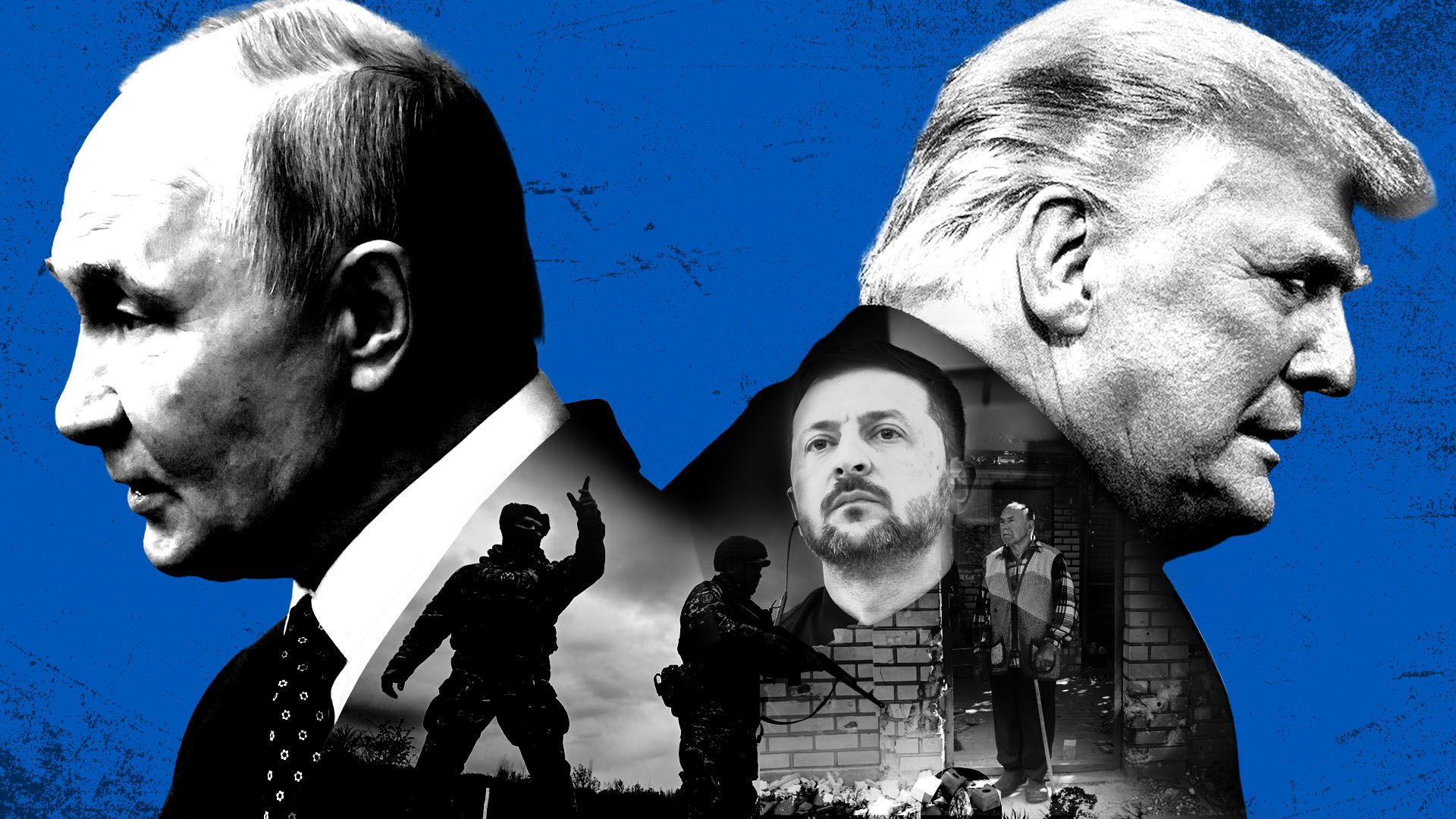Why India and China Hold the Keys to Peace in Ukraine
The Trump administration’s instinct to treat India and China as adversaries risks undermining one of the greatest opportunities for global diplomacy in our time: ending the war in Ukraine. Just as Qatar and Egypt were indispensable to brokering a ceasefire and humanitarian access in Gaza, India and China are indispensable to any credible, sustainable peace deal in Eastern Europe. The logic is simple—without parties seen as neutral and globally respected by both sides, no meaningful dialogue can take root.
Lessons from Gaza: Neutral Mediators Made the Difference
In Gaza, the Trump administration could not directly negotiate with Hamas. The U.S. is not a neutral actor in that conflict—Washington’s strong alignment with Israel meant it needed intermediaries trusted by both sides. Qatar and Egypt filled that role deftly, leveraging deep regional relationships and practical diplomacy to bridge divides. Without them, ceasefire frameworks, hostage exchanges, and humanitarian aid corridors would never have materialized.
This is the critical lesson: even the most powerful nations require trusted intermediaries to translate military standoffs into political dialogue. Power alone does not bring peace; credibility does.
Why Ukraine Is Even More Complex
The Ukraine war, now in its third year, is not a case of one dominant force versus a small insurgent group. Unlike Hamas, Russia is a nuclear-armed superpower with strategic parity to NATO—a situation governed by the grim doctrine of MAD (Mutually Assured Destruction). Any continued escalation risks not just European instability but a potential global catastrophe.
This is precisely why neutral powers like India and China matter. Both maintain complex but functional relationships with Moscow, Kyiv, and Washington. Both sit at the intersection of global economic and security interests. And crucially, both have repeatedly called for dialogue, restraint, and negotiated settlements, while also maintaining credibility across the Global South.
The Case for India and China as Co-Mediators
India and China represent the two largest civilizations on Earth—together home to over one-third of humanity. They are not merely “regional powers”; they are global stabilizers.
-
India’s credibility lies in its democratic ethos and history of non-alignment. Prime Minister Narendra Modi’s consistent messaging—“This is not an era of war”—has earned India diplomatic trust even in polarized environments.
-
China’s leverage comes from its economic ties and its unique communication channel with both Russia and the West. Despite tensions with Washington, Beijing has maintained dialogue with Kyiv and participated in peace frameworks under the UN.
If both countries jointly convened or facilitated dialogue—perhaps through an expanded BRICS+ or G20 peace forum—it would instantly change the geopolitical tone. Their involvement would not replace Western influence; it would complement it by restoring balance and legitimacy to the negotiating table.
Why the U.S. Should Rethink Its Strategy
The Trump administration’s adversarial posture toward Beijing and its transactional diplomacy with New Delhi may play well domestically, but it undermines global problem-solving. Instead of viewing India and China as rivals in a zero-sum contest, Washington should recognize their indispensable roles as peace multipliers.
A pragmatic approach would involve:
-
Inviting India and China into a peace contact group, along with Turkey, Brazil, and the UN Secretary-General.
-
Separating economic rivalry from peace diplomacy. Trade disputes and technology competition need not spill into conflict mediation.
-
Empowering back-channel diplomacy. Informal dialogues between think tanks, retired generals, and diplomats—similar to those used in the Camp David and Oslo processes—can lay the groundwork for official negotiations.
Toward a Political Track
Right now, the Ukraine conflict is stuck on a military track. Every new shipment of weapons, every new offensive, and every fresh sanction deepens the stalemate. India and China’s involvement could force a recalibration—a shift from escalation to negotiation.
The West cannot unilaterally dictate peace. Russia will not surrender under pressure. But if the world’s two largest non-Western powers step forward—not to side with Moscow, but to anchor a fair political process—momentum could finally build toward a durable ceasefire and reconstruction roadmap.
Conclusion: Multipolar Diplomacy Is the Only Path Forward
The peace in Gaza was not born in Washington or Tel Aviv—it was brokered through Doha and Cairo. Likewise, peace in Ukraine will not be forged in Brussels or Moscow alone. It will emerge from a multipolar dialogue that includes Delhi and Beijing.
If the Trump administration is serious about “America First,” it should realize that global peace and economic stability are America’s first interests. By inviting India and China to the table—not as adversaries but as partners in peace—the U.S. could not only end a devastating war but also inaugurate a new era of pragmatic, multipolar diplomacy.
In an age of mutual destruction, shared survival must become the new strategy.
भारत और चीन ही यूक्रेन में शांति की कुंजी हैं
ट्रम्प प्रशासन का भारत और चीन को विरोधी की तरह देखना उस ऐतिहासिक अवसर को नष्ट कर सकता है, जो इस समय दुनिया के सामने है — यूक्रेन युद्ध को समाप्त करने का अवसर। जैसे क़तर और मिस्र ग़ज़ा में संघर्षविराम और मानवीय सहायता के लिए अनिवार्य मध्यस्थ बने, वैसे ही भारत और चीन किसी भी स्थायी यूक्रेन शांति समझौते के लिए अनिवार्य हैं। तर्क बिल्कुल स्पष्ट है — जब तक ऐसे पक्ष शामिल नहीं होंगे जिन्हें दोनों ओर से तटस्थ और विश्वसनीय माना जाए, तब तक कोई सार्थक संवाद संभव नहीं।
ग़ज़ा से सबक: तटस्थ मध्यस्थ ही अंतर लाए
ग़ज़ा में ट्रम्प प्रशासन सीधे हमास से बातचीत नहीं कर सका। अमेरिका उस संघर्ष में एक तटस्थ पक्ष नहीं है — इज़रायल के प्रति उसके खुले समर्थन ने यह असंभव बना दिया। इसलिए क़तर और मिस्र जैसे देशों ने सेतु का काम किया। उन्होंने अपने क्षेत्रीय प्रभाव और व्यवहारिक कूटनीति का इस्तेमाल करते हुए दोनों पक्षों के बीच संवाद, युद्धविराम और सहायता समझौते संभव किए।
यही सबसे बड़ा सबक है: केवल शक्ति शांति नहीं लाती, विश्वसनीयता लाती है। दुनिया के सबसे ताक़तवर देश को भी तब मध्यस्थों की ज़रूरत होती है, जब वह खुद पर भरोसा नहीं दिला सकता।
यूक्रेन का मामला और भी जटिल है
यूक्रेन युद्ध, जो अब अपने तीसरे वर्ष में है, हमास जैसे किसी छोटे गैर-राज्य समूह का मामला नहीं है। रूस कोई सीमित ताक़त नहीं — वह परमाणु हथियारों से लैस एक महाशक्ति है, जिसका नाटो से सैन्य संतुलन बना हुआ है। यही कारण है कि यह स्थिति MAD (Mutually Assured Destruction) — यानी "आप मारो, आप भी मरो" — के डर से संचालित होती है। इसका मतलब है कि कोई भी बड़ा सैन्य कदम मानव सभ्यता के लिए ख़तरा बन सकता है।
यही वह कारण है कि भारत और चीन जैसे तटस्थ शक्तियों की भूमिका निर्णायक है। दोनों के रूस, कीव और वाशिंगटन से संबंध हैं। दोनों वैश्विक अर्थव्यवस्था और सुरक्षा के चौराहे पर खड़े हैं। और दोनों बार-बार बातचीत, संयम और राजनीतिक समाधान की बात करते रहे हैं — और ऐसा करते हुए, दोनों ने ग्लोबल साउथ में गहरी विश्वसनीयता बनाए रखी है।
भारत और चीन: संयुक्त मध्यस्थता का आदर्श सूत्र
भारत और चीन पृथ्वी की दो सबसे बड़ी सभ्यताएँ हैं — मिलकर ये मानवता के एक तिहाई से अधिक लोगों का प्रतिनिधित्व करते हैं।
वे मात्र “क्षेत्रीय शक्ति” नहीं, बल्कि वैश्विक संतुलनकर्ता हैं।
-
भारत की विश्वसनीयता उसकी लोकतांत्रिक परंपरा और गुटनिरपेक्ष नीति में निहित है। प्रधानमंत्री नरेंद्र मोदी का यह संदेश — “यह युद्ध का युग नहीं है” — विश्व मंच पर गूंजा है और भारत को जटिल कूटनीतिक परिदृश्यों में भी भरोसेमंद बना दिया है।
-
चीन की पकड़ उसकी आर्थिक पहुंच और रूस-पश्चिम दोनों के साथ संवाद बनाए रखने की क्षमता में है। वॉशिंगटन से तनाव के बावजूद, बीजिंग ने कीव के साथ संवाद और संयुक्त राष्ट्र के अंतर्गत शांति प्रयासों में भागीदारी बनाए रखी है।
यदि ये दोनों देश संयुक्त रूप से किसी शांति मंच — जैसे विस्तारित BRICS+ या G20 शांति पहल — के तहत बातचीत को आगे बढ़ाएँ, तो यह तुरंत भू-राजनीतिक माहौल को बदल देगा। पश्चिमी प्रभाव समाप्त नहीं होगा, बल्कि यह एक संतुलित, वैध और बहुध्रुवीय कूटनीतिक प्रक्रिया को जन्म देगा।
अमेरिका को अपनी रणनीति पर पुनर्विचार करना होगा
ट्रम्प प्रशासन का बीजिंग के प्रति शत्रुतापूर्ण रुख और नई दिल्ली के साथ केवल लेन-देन आधारित संबंध वैश्विक शांति के लिए बाधक हैं। अमेरिका को भारत और चीन को प्रतिद्वंद्वी नहीं, बल्कि शांति-सहयोगी के रूप में देखना चाहिए।
एक व्यावहारिक अमेरिकी नीति में यह कदम शामिल हो सकते हैं:
-
भारत और चीन को एक “शांति संपर्क समूह” में शामिल करना, जिसमें तुर्की, ब्राज़ील और संयुक्त राष्ट्र महासचिव भी हों।
-
आर्थिक प्रतिस्पर्धा और शांति कूटनीति को अलग रखना। व्यापार युद्ध और तकनीकी प्रतिस्पर्धा का असर शांति प्रयासों पर नहीं होना चाहिए।
-
पर्दे के पीछे की कूटनीति को सक्षम बनाना। जैसे ओस्लो या कैंप डेविड की प्रक्रिया में हुआ था, वैसे ही सेवानिवृत्त जनरल, राजनयिक और विशेषज्ञ अनौपचारिक संवादों से जमीन तैयार कर सकते हैं।
युद्ध की राह से राजनीति की राह तक
वर्तमान में यूक्रेन संघर्ष पूरी तरह सैन्य मार्ग पर अटका हुआ है। हर नया हथियार, हर नया प्रतिबंध, हर नई जवाबी कार्रवाई इस गतिरोध को गहराती जा रही है। भारत और चीन की मध्यस्थता ही वह बाहरी झटका दे सकती है, जो इस संघर्ष को “सैन्य से राजनीतिक” दिशा में मोड़े।
पश्चिम अकेले शांति नहीं थोप सकता, रूस दबाव में झुकने वाला नहीं। लेकिन यदि भारत और चीन जैसे शक्तिशाली, तटस्थ देश आगे आएँ — रूस के पक्ष में नहीं, बल्कि निष्पक्ष राजनीतिक प्रक्रिया को स्थिर करने के लिए — तो एक स्थायी संघर्षविराम और पुनर्निर्माण योजना का रास्ता खुल सकता है।
निष्कर्ष: बहुध्रुवीय कूटनीति ही शांति का भविष्य है
ग़ज़ा की शांति न वॉशिंगटन में बनी, न तेल अवीव में — वह दोहा और काहिरा में बनी। वैसे ही यूक्रेन की शांति ब्रसेल्स या मॉस्को में नहीं, बल्कि नई दिल्ली और बीजिंग की भागीदारी से बनेगी।
यदि ट्रम्प प्रशासन सच में “अमेरिका फर्स्ट” चाहता है, तो उसे समझना चाहिए कि वैश्विक शांति और आर्थिक स्थिरता ही अमेरिका के असली हित हैं।
भारत और चीन को शांति साझेदार बनाकर, अमेरिका न केवल एक विनाशकारी युद्ध रोक सकता है, बल्कि एक नई, व्यावहारिक और बहुध्रुवीय कूटनीतिक व्यवस्था की शुरुआत कर सकता है।
इस परमाणु युग में, जब “परस्पर विनाश” की गारंटी है —
अब नई रणनीति केवल एक हो सकती है:
“साझा अस्तित्व” ही साझा विजय है।


No comments:
Post a Comment